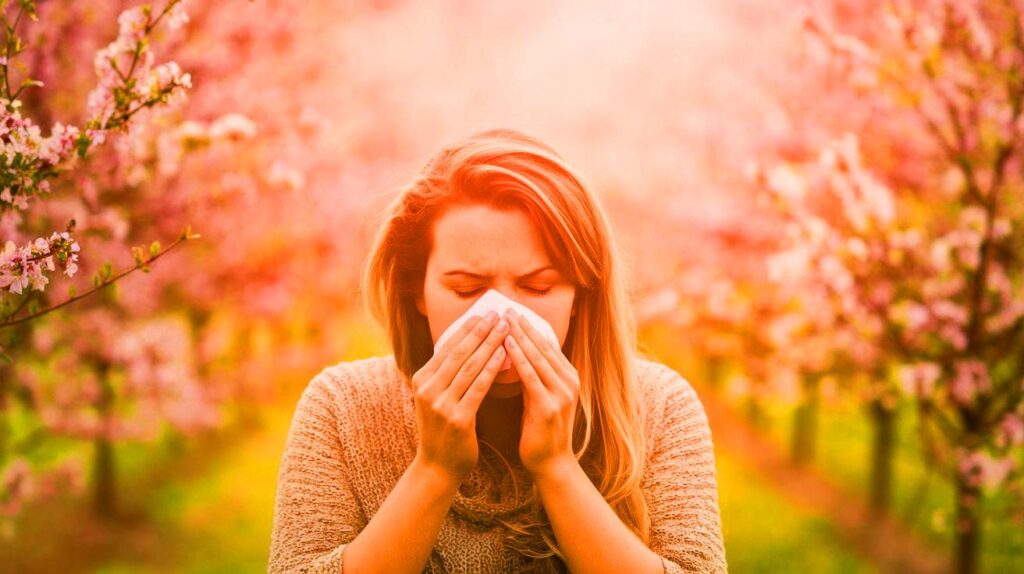| In Brief |
|
As the warmer days return, many are delighted to enjoy the sun and outdoor spaces again. However, for a significant portion of the population, this time of year brings discomfort from seasonal allergies. Climate change plays a significant role in worsening these allergic symptoms, extending pollination seasons and increasing pollen production. These climatic changes only heighten the distress for those suffering from rhinitis and asthma, turning what should be a time of enjoyment into a real ordeal.
Seasonal Allergies on the Rise
Pollen allergies are sharply increasing, a trend that appears to be accelerating over the years. According to a report from the American Asthma and Allergy Foundation (AAFA), 2025 could be particularly harsh for those suffering from hay fever. In the United States, one in three adults and one in four children are affected. In France, the number of allergic rhinitis cases has tripled over the past twenty-five years. This surge is largely attributed to climate change, which extends pollination seasons and encourages plants to produce more pollen.
Pollination now starts about 20 days earlier than it did 30 years ago, and some pollination seasons overlap, notably between grasses and ragweed. This situation makes life even more difficult for allergy sufferers, turning millions into potential victims of this seasonal plague.
Economic Impact of Allergies
Seasonal allergies, often seen as mere discomforts, have considerable economic repercussions. Each year, billions of dollars are lost due to absenteeism, medical consultations, and medication required to relieve the symptoms of those affected. Asthma, allergic rhinitis, and other related allergies place a significant financial burden on healthcare systems and businesses.
The growing reliance on antihistamines and other medical treatments to manage these symptoms underscores the urgency of finding sustainable solutions. The prevention and management of seasonal allergies cannot be limited to symptomatic treatments; they must include measures aimed at reducing the impact of climate change on our environment.
The Role of Climate Change
Two major factors contribute to the increasing number of allergy sufferers: the combustion of fossil fuels and urbanization. Burning coal, oil, and natural gas raises carbon dioxide levels in the atmosphere, prompting many plants to produce more pollen. Urban centers are not spared, providing an ideal environment for the proliferation of ragweed, a plant known for its high allergenic potential.
Wildfires, which release significant amounts of carbon dioxide, also contribute to climate change, creating conditions conducive to allergies. This vicious cycle requires urgent interventions to limit greenhouse gas emissions and protect public health.
Solutions and Future Perspectives
While treatments such as antihistamines or nasal sprays can provide temporary relief, the long-term solution lies in combating climate change. Reducing carbon dioxide emissions and adopting more sustainable practices are essential steps to curb rising temperatures and, consequently, the proliferation of allergies.
Experts recommend starting allergy treatments before symptoms appear to maximize effectiveness. However, the best strategy to mitigate the impact of seasonal allergies remains taking concrete steps to slow climate change, thereby protecting future generations from this growing menace.
As spring settles in, it’s crucial to consider how we can act individually and collectively to mitigate climate change’s effects on our health. What changes in our lifestyles and environmental policies are we willing to adopt to safeguard our well-being and that of future generations?








